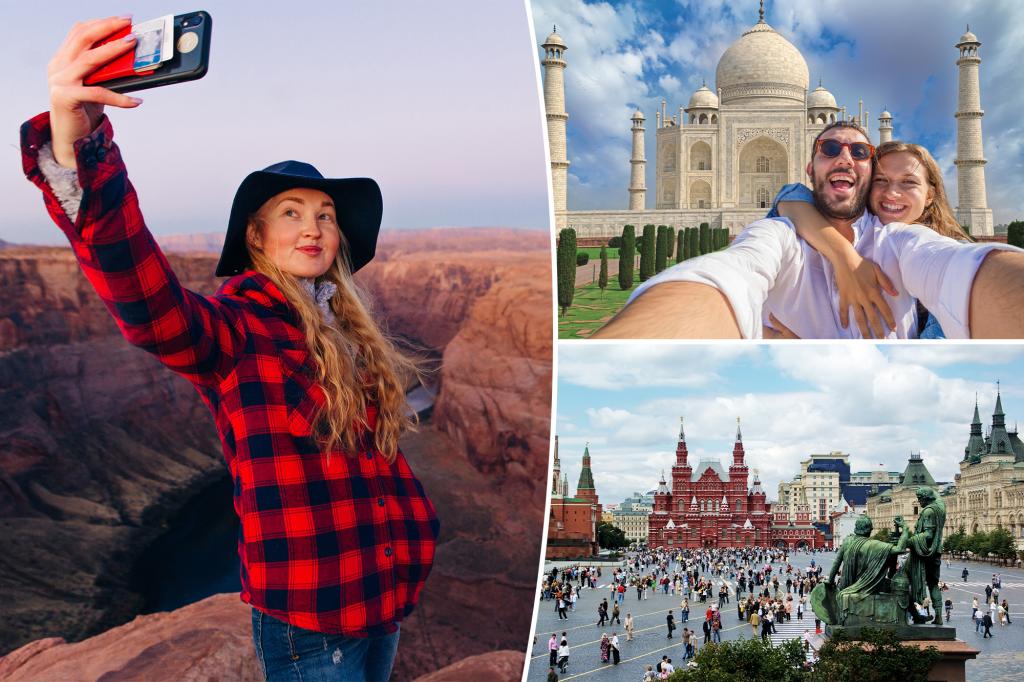THE DANGEROUS PURSUIT OF THE PERFECT SELFIE
In today’s social media-dominated world, the quest for the perfect selfie has evolved from a harmless form of self-expression into a potentially life-threatening activity for some. A comprehensive study conducted by The Barber Law Firm has shed light on this alarming trend, examining selfie-related incidents worldwide from March 2014 to May 2025. The research team meticulously analyzed news reports through Google News, focusing specifically on cases where the act of taking a selfie directly resulted in injury or death. What emerges is a sobering picture of how the pursuit of social media validation can sometimes lead people to take extraordinary—and unnecessary—risks with their safety and lives.
India stands out dramatically in this global analysis, accounting for an astonishing 42.1% of all selfie-related incidents across the world. The numbers are truly staggering: 271 casualties in total, including 214 deaths and 57 injuries. Researchers attribute this high figure to a perfect storm of factors: India’s dense population centers, widespread accessibility to hazardous environments such as cliff edges and railway tracks, combined with a vibrant and enthusiastic social media culture. This combination has proven deadly time and again, as people push boundaries in search of that standout image that will garner attention online. The cultural emphasis on sharing experiences through social media appears to sometimes override basic safety considerations, with tragic consequences.
The United States ranks second in this unfortunate list, though with significantly fewer incidents than India—45 total casualties, comprising 37 deaths and 8 injuries. Russia follows in third place with 19 casualties (18 deaths and 1 injury), while Pakistan and Australia complete the top five with 16 and 15 casualties respectively. What’s particularly notable about Pakistan’s statistics is that all 16 incidents resulted in fatalities rather than injuries, suggesting particularly dangerous conditions or behaviors. The global distribution of these incidents indicates that while the problem is most acute in India, it represents a worldwide phenomenon that transcends cultural boundaries. Regardless of nationality, humans seem susceptible to the same impulse to capture extraordinary moments, sometimes at extraordinary risk.
According to the research, falling accounts for the largest percentage of selfie-related fatalities worldwide—an alarming 46% of all incidents. These falls occur from various elevated positions: rooftops, cliff edges, tall structures, and other high places that offer spectacular views but come with equally spectacular dangers. The psychology behind this behavior is complex but fundamentally human—the desire to capture and share remarkable experiences often clouds judgment about physical safety. As Kris Barber, Founder and Principal Attorney at The Barber Law Firm, poignantly noted, “Our research highlights a troubling trend where the pursuit of social media validation is literally costing lives. The perfect photo simply isn’t worth the danger.” What makes these tragedies particularly heartbreaking is their preventability—most could have been avoided by simply choosing a safer vantage point or stepping back from dangerous edges.
The cultural forces driving this phenomenon cannot be overstated. With platforms like Instagram and TikTok continuing to dominate social media landscapes worldwide, users face unprecedented pressure to produce content that stands out from the crowd. This often translates to more extreme locations, more dangerous poses, and more risky behavior—all in service of capturing that one viral-worthy image. The constant exposure to others’ seemingly perfect and adventurous lives creates a distorted perception of what constitutes normal risk-taking behavior. Young people especially, who may be more susceptible to peer influence and less experienced in risk assessment, can find themselves making split-second decisions with potentially fatal consequences. This pattern extends beyond selfies to other dangerous social media trends, such as various “challenges” that periodically sweep through platforms like TikTok, sometimes with similarly tragic outcomes.
Recent incidents illustrate the continuing nature of this problem. In one particularly alarming case, a tourist in India attempted to take a selfie with an elephant—a wild animal weighing several tons and capable of unpredictable behavior. The result was predictably disastrous: the individual was trampled and partially stripped of clothing, resulting in humiliation and injury that could easily have been fatal. This example highlights the sometimes bizarre risk calculations people make when pursuing social media content—weighing the potential “reward” of an unusual photograph against the very real physical danger posed by wild animals, precarious heights, or other hazards. As Barber wisely counsels, “There are always safer alternatives to capture beautiful moments without putting yourself at risk. No amount of likes or shares can justify endangering your life.” In an era where digital validation has become increasingly important to many people’s sense of self-worth, this reminder of perspective seems increasingly necessary. The perfect selfie may garner temporary attention online, but no photograph is worth the permanent consequence of serious injury or death.















